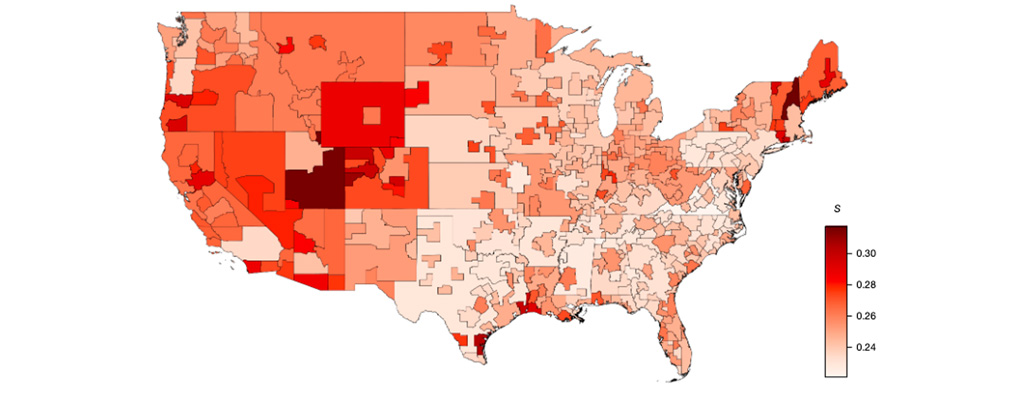Research conducted by:
Alfonso Mejia, Penn State, Michael Gomez, Penn State, Benjamin Ruddell, Northern Arizona University, Richard Rushforth, Northern Arizona University
Tags:
food shocks food supply supply chain
Research Summary:
Food shocks, which are major disruptions in the food supply chain, are a growing global problem. Just like biodiversity helps protect ecosystems against external shocks, ecological theory suggests that food supply chain diversity is crucial for managing the risk of food shock to humans population. In this work, the researchers found that that boosting a city’s food supply chain diversity increases the resistance of a city to food shocks of mild to moderate severity by up to 15 per cent. They also developed an intensity–duration–frequency model linking food shock risk to supply chain diversity. According to the team, the model -- which is simple to use and understand -- could help cities devise policies that will improve their ability to resist or manage food shocks.
How Roar played a role in this research:
Deriving the annual, intranational food flow networks for the USA is a computationally intense task. The researchers used the Freight Analysis Framework version 4 database. The database consists of annual commodity flows during 2012−2015 for 115 geographic areas in the USA and 43 different sectors. The team relied on Penn State's Roar supercomputer to perform the calculations.
|
Article Title: |
Supply chain diversity buffers cities against food shocks |
|---|---|
|
Published In: |
Nature |
|
Abstract: |
Food supply shocks are increasing worldwide1,2, particularly the type of shock wherein food production or distribution loss in one location propagates through the food supply chain to other locations3,4. Analogous to biodiversity buffering ecosystems against external shocks5,6, ecological theory suggests that food supply chain diversity is crucial for managing the risk of food shock to human populations7,8. Here we show that boosting a city’s food supply chain diversity increases the resistance of a city to food shocks of mild to moderate severity by up to 15 per cent. We develop an intensity–duration–frequency model linking food shock risk to supply chain diversity. The empirical–statistical model is based on annual food inflow observations from all metropolitan areas in the USA during the years 2012 to 2015, years when most of the country experienced moderate to severe droughts. The model explains a city’s resistance to food shocks of a given frequency, intensity and duration as a monotonically declining function of the city’s food inflow supply chain’s Shannon diversity. This model is simple, operationally useful and addresses any kind of hazard. Using this method, cities can improve their resistance to food supply shocks with policies that increase the food supply chain’s diversity. View article on publisher's website |

